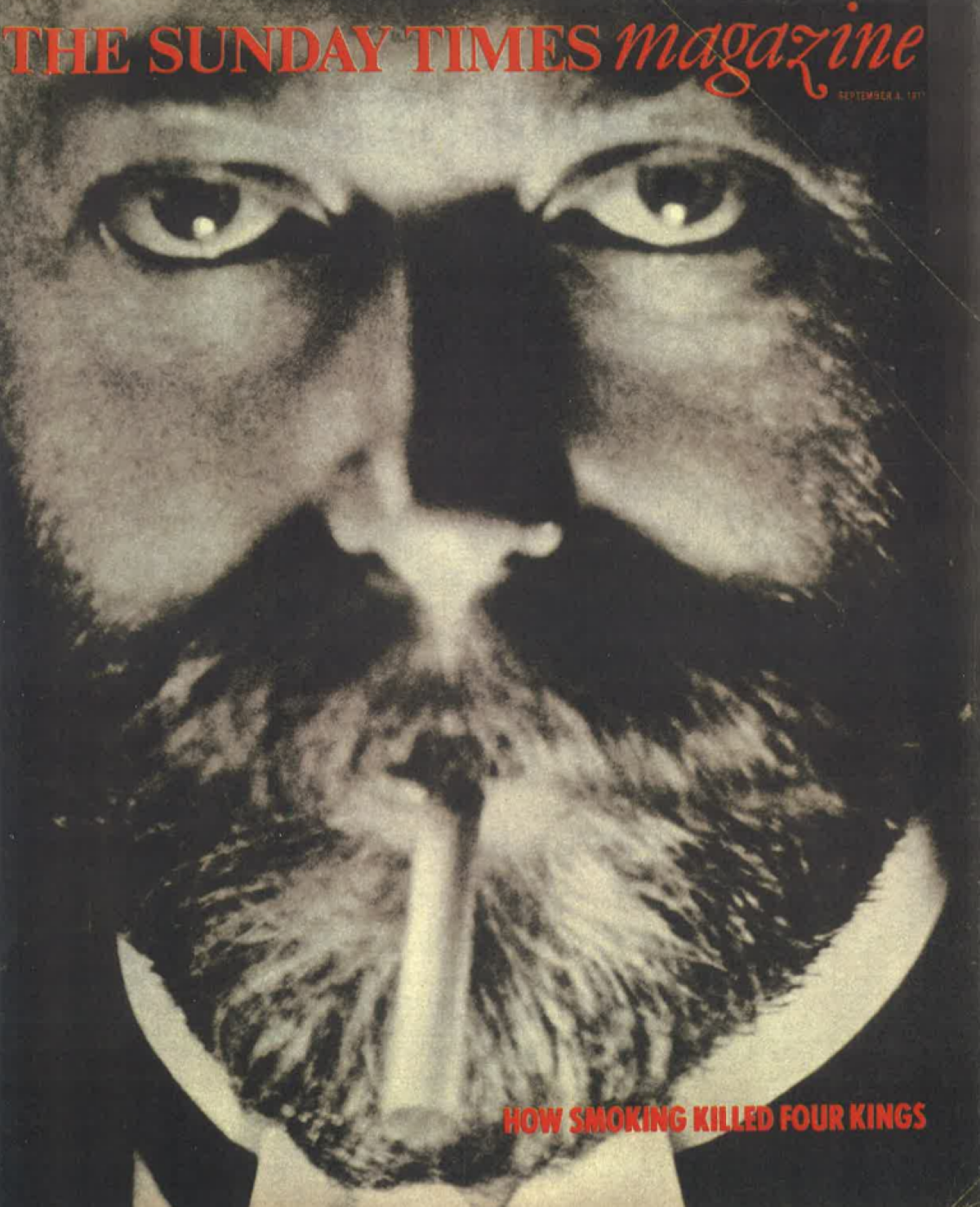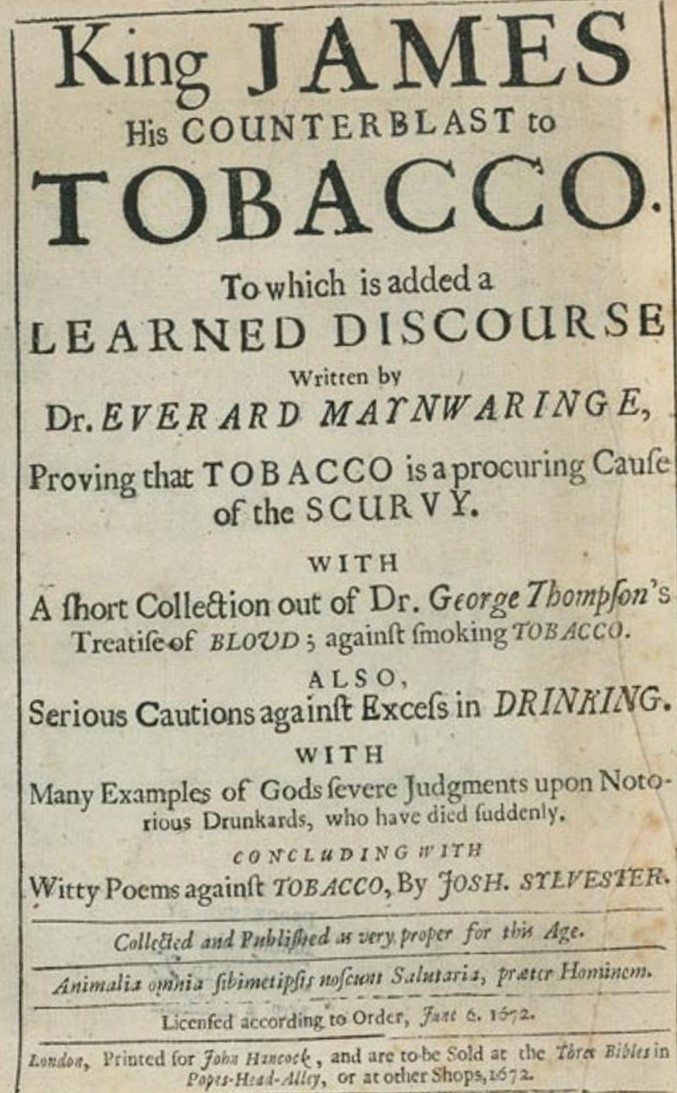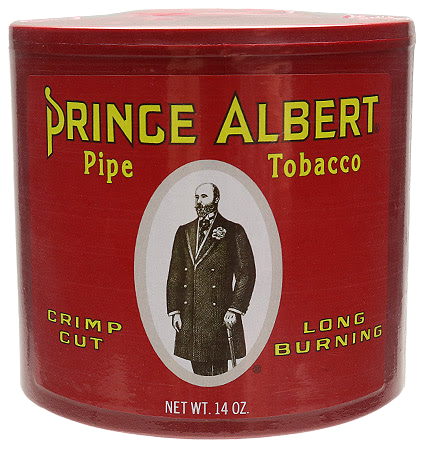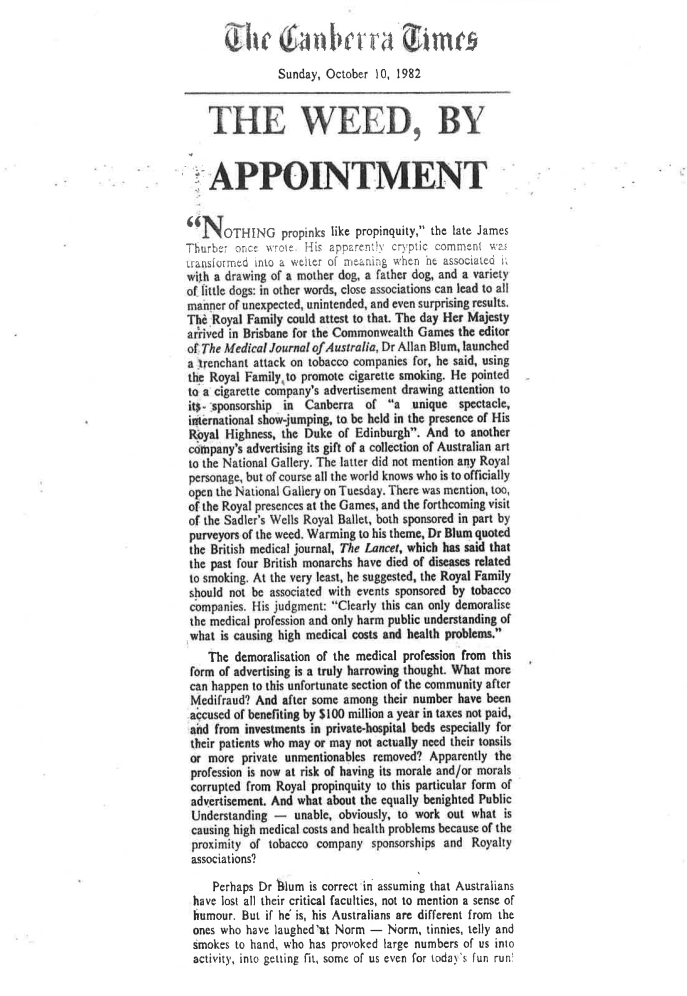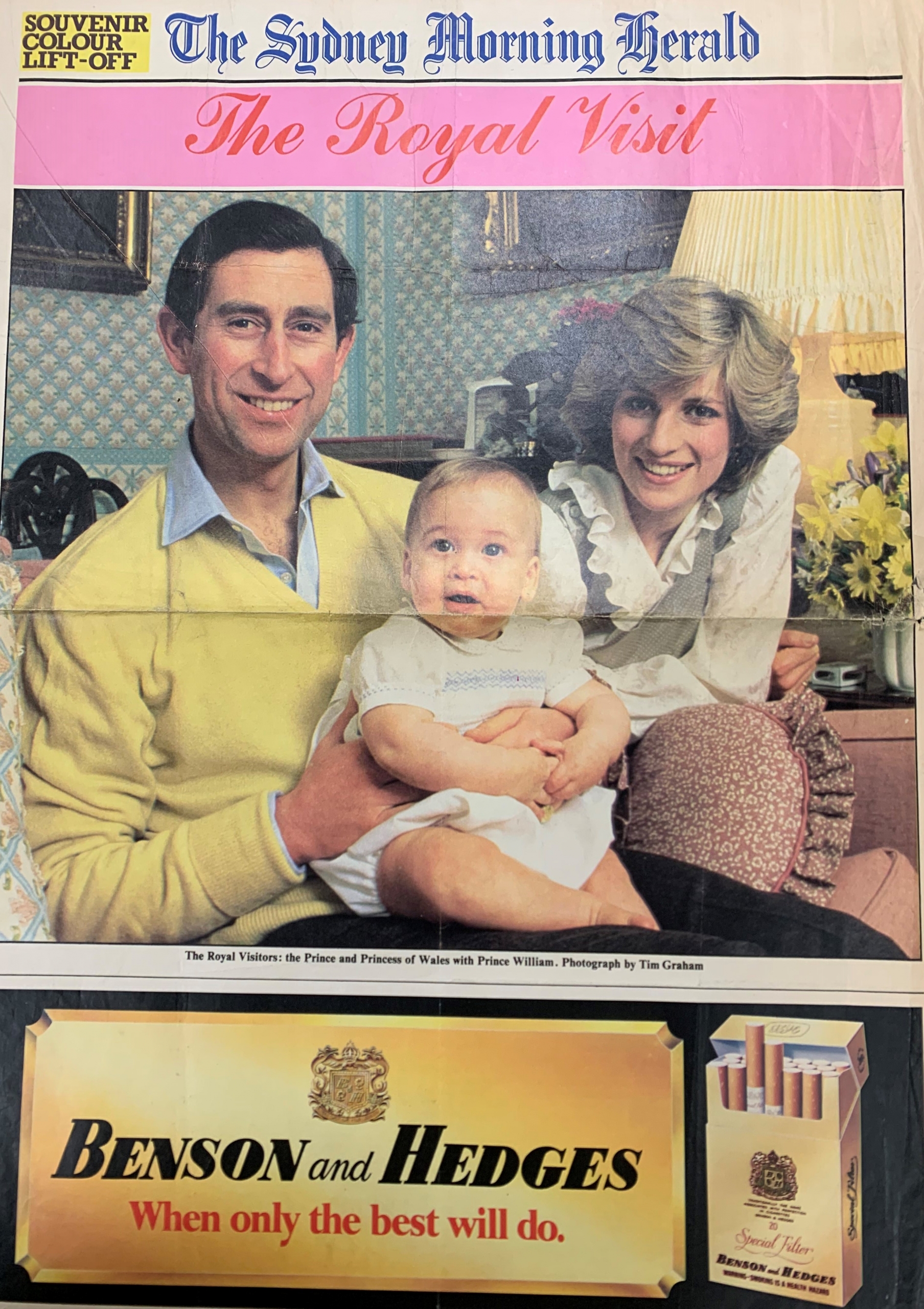Coronations, Cigarette Companies, and Cancer
King George VI smoking, Buckingham Palace, April 1948
Photograph by Baron (Sterling Henry Nahum)
Source: Royal Collection Trust
“Have you not reason then to bee ashamed, and to forbeare this filthie noveltie, so basely grounded, so foolishly received and so grossely mistaken in the right use thereof? In your abuse thereof sinning against God, harming your selves both in persons and goods, and raking also thereby the markes and notes of vanitie upon you: by the custome thereof making your selves to be wondered at by all forraine civil Nations, and by all strangers that come among you, to be scorned and contemned. A custome lothsome to the eye, hatefull to the Nose, harmefull to the braine, dangerous to the Lungs, and in the blacke stinking fume thereof, neerest resembling the horrible Stigian smoke of the pit that is bottomelesse…”
— A Counterblaste to Tobacco
Written by King James I of England in 1604, A Counterblaste to Tobacco is one of the earliest diatribes against smoking. In it he decries having to breathe in other people’s smoke, rails against its stench, and warns of the dangers to the lungs.
James’s disdain for the noxious plant led him to levy a heavy excise tax on tobacco brought from North America, but 20 years later the ever-increasing demand for tobacco led him to do an about-face and create a royal monopoly for the crop.
Over the ensuing three centuries, tobacco would be a mainstay of the British economy, and Great Britain would be the leading tobacco merchant to the world.
In 1877 possibly by appealing to the love of smoking by Prince Albert, Queen Victoria’s consort (1819-1861), and creating a brand of pipe mixture named for him, tobacco manufacturer Gallaher Limited was permitted to include the coat of arms of British monarchs on its cigarette packages.
Over the next century, cigarette makers used every opportunity to associate themselves and their products with luxury… and royalty. During World War I, when cigarettes usurped cigars as the tobacco product of choice by young men, members of the royal family lent their name and image to the distribution of cigarettes to the boys in the trenches and wounded soldiers in hospitals.
In 1937, Imperial Tobacco, maker of the best-selling brand of cigarettes, Player’s, issued an album of tobacco trading cards—a popular hobby among boys—to commemorate the coronation of King George VI and Queen Elizabeth.
To honor Queen Elizabeth II at her coronation in 1953, TOBACCO, the leading journal of the trade, published A History of Smoking from Elizabeth I to Elizabeth II.
To burnish their nicotine-stained image throughout the latter half of the 20th century and beyond, British cigarette companies became patrons of the arts and universities, as well as major sponsors of televised sporting events. During Prince Charles’ and Princess Diana’s visit to Australia in 1983, Gallaher tied one of its cigarette brands to the royal family in an infamous souvenir front page of The Sydney Morning Herald that featured an advertisement for Benson & Hedges. The previous year, the South-African based cigarette company Rothmanns also tied its Dunhill cigarette brand to an international showjumping event “to be held in the presence of His Royal Highness, the Duke of Edinburgh.”
Consider the devastating toll of cigarette smoking not just on the population of Great Britain—where it is still the leading preventable cause of death, killing 76,000 a year—but also on the royal family: Prince Charles’ grandfather, King George VI (1895-1952), was just 56 when he died from lung cancer after also having long suffered from severe cardiovascular disease. Charles’ greatgrandfather, King George V (1865-1936), and greatgreatgrandfather, King Edward VII (1841-1910), both died from smoking-related chronic bronchitis and heart disease, and Charles’ granduncle, King Edward VIII (1894-1972), who became the Duke of Windsor after abdicating the throne, died from laryngeal cancer. Queen Elizabeth’s sister, Princess Margaret (1930-2002), who smoked heavily, died at 71 from severe lung and heart disease.
Doubtless mindful of the ravages of cigarette smoking on his own family, Prince Charles became an outspoken anti-smoking advocate. In 1982, when I edited the Medical Journal of Australia (MJA) and produced the first theme issue on smoking at any medical journal, Prince Charles was the president of the British Medical Association and the patron of the MJA. Charles is believed to have been responsible for revoking the royal warrant to Gallaher in 1998. He is also said to have urged other close family members to stop smoking.
The positive example Charles III has set may prove to be the death knell for British cigarette makers, even as they reinvent themselves as veritable pharmaceutical companies and try to entice their nicotine-addicted consumers—plus a new generation of pleasure-seekers—to take up vaping. In this gambit, British American Tobacco and other nicotine pushers (notably the US giants Philip Morris International [PMI] and Altria) are hiring former government health officials (including from the World Health Organization), public health school researchers, and executives of health foundations to endorse their vape products and to mock anyone who does not agree with this “harm reduction” pathway to a “smoke-free world.” Although PMI claims it wants to transition entirely away from cigarettes, we’ve heard this going-out-of-business sale many times before with each new claim of a safer cigarette. Meanwhile, nearly 90% of the company’s profits still come from the sales of cigarettes, not vaping devices.
The public would be wise to follow the example of Charles III by not having anything to do with tobacco companies or their new products. God save the King.
Alan Blum, MD
Director, The Center for the Study of Tobacco and Society
“Smoking: The King-Size Killer; HOW SMOKING KILLED FOUR KINGS” (8 pages)
Cover story by Oliver Gillie on how smoking killed four British kings; the cover image is of King Edward VII (1841-1910)
The Sunday Times Magazine (London)
September 4, 1977
.
A Counterblaste to Tobacco
King James I (1566-1625)
London
1604
Source: Tobacco: Its History Illustrated in the Books and Manuscripts in the Library of George Arents, Jr.
Volume 1: 1507-1615; page 402
Edited by Jerome E. Brooks
New York: The Rosenbach Company, 1937
“The English propaganda against the social use of tobacco, so inauspiciously begun by Philaretes [in 1602 with the publication of Work for Chimney-sweepers: OR A warning for Tobacconists, “Describing the pernicious use of Tobacco, no lesse pleasant than profitable for all sorts to reade. Fumus patria, Igne alieno Liculentier, As much to say, Better be chokt with English hemp, than poisoned with Indian Tobacco”], received a powerful impetus from the support of James I. Among western monarchs he was the first to condemn the popular habit and the only ruler to take up his pen to express his disapproval. The detestation in which he held tobacco became something of an obsession which lasted his lifetime. He had, no doubt, a natural aversion to the herb, but this seems to have been intensified by a well-nurtured malic against Raleigh, generally credited with the introduction of tobacco into England.” –Jerome E. Brooks
Two Broad-sides Against Tobacco
James I and physicians Everard Maynwaringe and George Thompson, collected and published by John Hancock
London, 1672
Source: Tobacco: Its History Illustrated in the Books and Manuscripts in the Library of George Arents, Jr.
Volume 2: 1615-1698; page 417
Edited by Jerome E. Brooks
New York: The Rosenbach Company, 1937
“Blast and Counterblast” (7 pages)
Blackwood’s Magazine (or “Maga”)
April, 1975
This essay by James Halliday dispels the myth that Sir Walter Raleigh introduced tobacco into England from Virginia in 1586, discusses the cultivation of tobacco in England as early as 1571, recounts King James I’s rebuke of the widely promoted claims of medicinal properties of tobacco, and describes his campaign to forbid the planting of tobacco in England and Wales, for which he enlisted the College of Physicians.
“Philip Morris ORIGINAL LONDON Cigarettes
“The Oldest high-grade Turkish Cigarettes in the World. Made of the Purest Tobaccos Only.”
Advertisement by Philip Morris & Co., Ltd.
LIFE Magazine
1912
His Royal Highness, The Prince of Wales (later Edward VIII)
Trading card
Circa 1935
“The King and the Wounded: His Majesty’s Representative Visits a Glasgow Hospital, with Gifts of Cigarettes”
Photograph in The Illustrated War News
February 23, 1916
“Wills’s Cigarettes: At Babies’ Hospital, Brockley”
Queen Mary, when Duchess of York, at the opening of Albany Deptford Babies’ Hospital, Brockley S.E., July 1933
Trading card by Imperial Tobacco Company in packs of Wills’s cigarettes, Number 35 in a series of 50, “Our King and Queen”
1937
“Prince Albert Crimp Cut Long Burning Pipe and Cigarette Tobacco”
Novelty Post Card
R.J. Reynolds Tobacco Company
1910
Prince Albert Crimp Cut Long Burning Pipe and Cigarette Tobacco
Tobacco Tin
R.J. Reynolds Tobacco Company
Circa 1950’s
“How much the smoking world owes to Edward VII [son of Queen Victoria and Prince Albert] remains generally unknown. He steered Society out of the doldrums of Mid-Victorianism, and the customs that he established still touch our daily lives.
The Reign of King George V
Commemorative cigarette card album issued by W.P & H.O. Wills cigarettes
Imperial Tobacco Company
1935
“Wills’s Cigarettes: The Princesses Elizabeth and Margaret Rose”
Cigarette trading card in the album The Reign of King George V
1935
The Coronation of H.M King George VI and H.M. Queen Elizabeth, 1937 (28 pages)
“An album to contain Player’s Coronation Series of cigarette cards”
Imperial Tobacco Company
1937
Seven trading cards by Imperial Tobacco Company of Great Britain and Ireland, Ltd., in packs of Wills’s cigarettes from a series of 50, “OUR KING AND QUEEN.” Click on each card to read the story behind the picture.
“This picture, a delightful family group of His Majesty King George VI, Her Majesty the Queen, the Princess Elizabeth and Princess Margaret Rose, bears witness to the happy family life of Their Majesties…”
Royal warrant renewed: Benson and Hedges Limited reappointed by Queen Victoria as purveyors of tobacco products to the royal household
Reproduced from Tobacco: A History of a habit
Benson and Hedges Ltd.
Circa 1934
“Although the Queen would never have brought herself to view smoking by men with anything but disfavour, and smoking by women with anything but abhorrence, she was yet by no means lacking in toleration and breadth of outlook, as was evidenced by the royal warrant which she granted to Alfred Paget Hedges shortly before her death om 1900. His firm, for so long as Queen Victoria reigned, was appointed ‘into the Place and Quality of Purveyors of Cigars and Cigarettes to Her Majesty’ for use in the royal household.
“A word of explanation may be necessary in this connection. It is the custom of the Royal Family to reward firms whose goods are of such quality that they are regularly supplied to the Royal Household with a royal warrant which permits the reproduction of the royal arms on these goods, together with the inscription ‘By Appointment Tobacconists to…,” or whatever may be the appropriate trade designation. Only goods which are regularly supplied over a period of years can achieve this distinction and hall-make of royal approval.
”It is pleasing to record that Benson & Hedges have been repeatedly honoured in this way, and that besides their first royal warrant, conferred on them by Queen Victoria, they have also had the royal appointment awarded to them by King Edward VII, by King George V (both as sovereign and as Prince of Wales), by Queen Alexandra, and by our present king.”
Three examples of advertisements for Benson and Hedges cigarettes in tins with the Royal coat of arms and the words “BY APPOINTMENT TOBACCONISTS TO HIS MAJESTY THE KING”
Included in Tobacco: A History of a habit
Benson and Hedges Ltd., Circa 1934
.
Examples of cigarette packs with the British Royal Seal: Gallaher’s Benson & Hedges “BY APPOINTMENT TOBACCONISTS TO THE LATE KING GEORGE VI” (Circa 1953); Rothmann’s Dunhill International “BY APPOINTMENT TO HER MAJESTY THE QUEEN SUPPLIER OF SMOKERS REQUISITES ALFRED DUNHILL LTD LONDON” (Circa 1980s); Benson & Hedges (South Africa, Circa 1990s).
“In Nassau at the Duchess of Windsor’s United Services Canteen where our soldiers and our allies meet, Chesterfield is the Smoker’s Choice”
Advertisement by Liggett & Myers Tobacco Company
LIFE Magazine
1943
_______________________________________________________________________________________________________________________________________________________
“No Revolution…
“LONDON, ENGLAND, Monday [November 14]
–An ancient British tradition went up in smoke here last week when Princess Margaret Rose, the King of England’s 19-year-old daughter, was seen contentedly drawing on a cigarette — in public.
“The Princess, absolutely the first female member of the royal family to consume tobacco out where people could see her, doesn’t seem to have stirred up much more than interested comment, however; not even a speech by Winston Churchill, who hitherto has been Britain’s top-ranking adherent of the aromatic leaf.”
News item, page 15
United States Tobacco Journal
November 19, 1949
“Elizabeth Takes Her Crown; Queen Elizabeth in Medieval Pomp; 2 Million Cheer Coronation Parade; Modern Miracle Lets World See Ancient Spectacle”
Front-page article (excerpt) by R.H. Shackford
New York World-Telegram & Sun
June 2, 1953
“To Celebrate the Coronation 1953: A History of Smoking from Elizabeth I to Elizabeth II” (54 pages)
Published by TOBACCO, the monthly Journal of the Trade
1953
“This History of Smoking through the Centuries offered in Commemoration of the Coronation in June, 1953, of Her Most Gracious majesty Queen Elizabeth the Second, in the Reign of whose illustrious Royal Predecessor and Namesake in the Sixteenth Century, the British People were first granted the Solace of Tobacco and acquired the Arts of its use; therefore insisting upon its increasing Production and Manufacture in a variety of Ways, to the Enjoyment and Benefit of themselves and the growing Enrichment of their Country.”
“Coronation Echo: ‘A copy of the Coronation issue of Smoke Signals was beautifully bound and sent to Her Majesty the Queen with an expression of loyalty and affection. Her Majesty has graciously accepted it…” (2 pages)
From the Christmas 1953 issue of Smoke Signals, the House magazine published for the employees of British Tobacco Company (Australia) Limited, and its Associated Companies
“Report from England…
British Celebrate 400 Years of Smoking”
Article in TOBACCO (Tobacco industry trade weekly)
April 21, 1961
“Britain has just celebrated the 400th anniversary of the introduction of smoking into Europe — and Britain — and a grand affair it has been.
“The Queen sent a message of congratulations to the Briar Pipe Trade Association, who organized it.
“The Governor of Virginia sent a message of congratulations, linking up the celebration with Sir Walter Raleigh, founder of Virginia and thanking his memory for the work he did in making smoking popular.
“And this message was received and commented on at a great banquet in London, by Sir Walter Raleigh’s nearest living descendant, Commander Walter Raleigh Gilbert, who was guest of honor at the celebration…
“Does this give your tobacco big boys an idea? Red Indians smoked centuries before America was discovered. You might even work out a 1000th year celebration of smoking in America, if you researched back far enough!”
“Royal guests of Molins…”
Photograph and caption in TOBACCO (tobacco industry trade weekly)
September 1968
“The Duke of Edinburgh and his son, Prince Charles, recently were guests of the Molins Machine Company, Ltd., on a visit to the company’s plant in London, England, where they were fascinated by the Mark 8 cigarette-making machine, capable of turning out 2500 cigarettes per minute. The visit to the plant, arranged by the British Ministry of Technology as a part of the Prince’s education program, marked his first to the Molins’ factory.”
From the Molins website, October 2024:
“Molins specialise in the design, development, and manufacture of secondary tobacco processing machinery, particularly mid-speed cigarette-makers, packers, and handling equipment…
“Molins has been a leading company in the tobacco industry for over 100 years. During this time we have established a global presence with offices and manufacturing locations in the USA, Brazil, Russia, Czech Republic and the UK. Our main operations, development and logistics are controlled from our UK offices…
“Investing in new cigarette making technology, handling systems, packaging machinery and instrumentation…”
“Poor sports”
Commentary by Alan Blum, MD
Editor, Medical Journal of Australia
October 16, 1982
Illustrations include the front cover photograph of Prince Charles and Princess Diana in the January-February 1982 issue of ALERT, The National Magazine of Better Living, published by the Adventist Church: “The Prince and Princess of Wales–Top Nonsmokers of the World”
“Royal Family ‘used’ to boost smoking” (2 pages)
Front-page article
The Sydney Morning Herald
October 7, 1982
“Mark leaps into a row”
Front page photograph with caption, The Sydney Morning Herald
October 9, 1982
“The Weed, By Appointment”
Editorial, The Canberra Times
October 10, 1982
“The Royal Visit / Benson and Hedges: When only the best will do.”
Souvenir front page with photograph of Prince Charles, Princess Diana, and Prince William above advertisement for Benson and Hedges cigarettes
The Sydney Morning Herald
March 14, 1983


